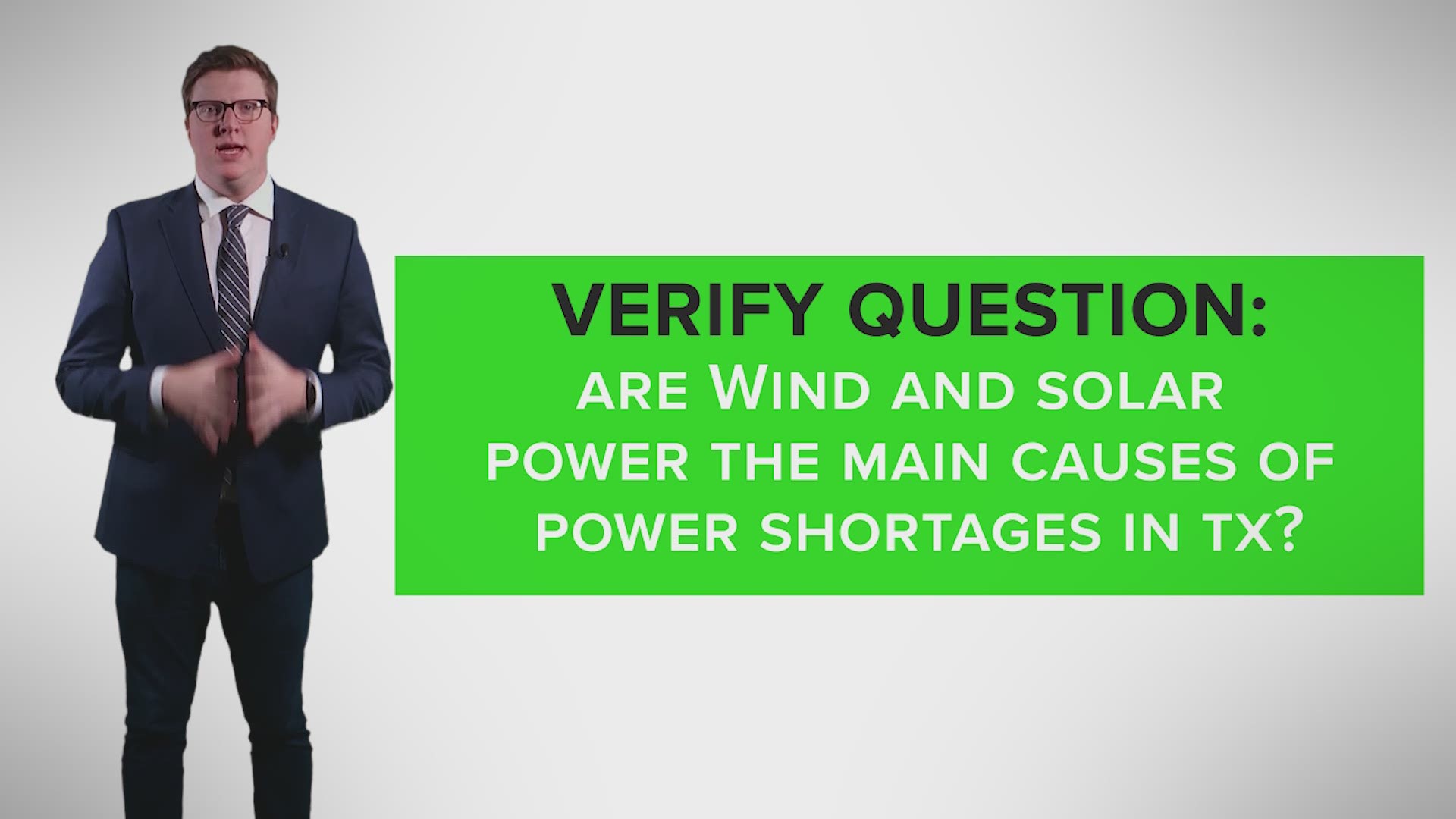Texas is still struggling with power outages in the continuation of a tough week that has seen the southeastern United States plagued by a winter storm and cold spell rarely seen within the region. The situation in Texas, however, has stood out as particularly devastating. Much of the state has faced rolling power outages for much of the week while temperatures have remained well below freezing.
Some have blamed renewable energy, and wind energy in particular, as the culprit for Texas’ woes. But the evidence doesn’t support that.
THE QUESTION
Is renewable energy primarily responsible for Texas’ power deficits?
THE ANSWER
No. Data from ERCOT, which manages Texas’ independent grid, shows that all power sources in Texas are falling short at the moment and the greatest losses are in thermal energy sources like coal and natural gas.
WHY WE ARE VERIFYING
In an interview with Fox News’s Sean Hannity on Tuesday, Texas Governor Greg Abbott criticized calls for a Green New Deal climate change policy, saying wind turbines and solar power “thrust Texas into a situation where it was lacking power in a statewide basis.”
That claim has been repeated by a number of Texan politicians and shared in numerous social media posts.
WHAT WE FOUND
In a February 17 virtual media call, ERCOT said 46,000 MW (megawatts) of generation has been forced off the system in Texas. Of that, 28,000 MW is from thermal sources such as coal, natural gas and nuclear energy and 18,000 MW is from renewable sources such as wind and solar. A press release from ERCOT has reiterated those same numbers.
So of the 46,000 MW that the state is losing, 61% is from thermal sources while 39% is from renewable sources.
ERCOT President and CEO Bill Magness said on the media call that they have generating units “of all types” that went offline. He named a number of reasons that they have done so, including issues with pipelines for natural gas systems, icing of wind turbine blades and issues with solar panels caused by snow and cloud cover.
ERCOT manages the Texas power grid, which is independent from the eastern and western power grids. They have ties to the eastern grid and Mexico grids, but the independent nature of Texas’ grid has left those ties small. Magness said during the call that they can only pull 800 MW daily from the eastern grid and 400 MW daily from the Mexican grid. That’s just 1,200 MW when the state is down 46,000 MW.
And it’s not just ERCOT who has spread the blame across all of Texas’ power generators. In fact, Abbott himself has done so outside of that viral Hannity appearance. In an interview with WFAA prior to his appearance on Fox News, Abbott explained a significant reason why the state isn’t generating enough power is due to natural gas.
“It's frozen in the pipeline. It's frozen at the rig. It's frozen at the transmission line,” Abbott said. “The natural gas providers are incapable of providing the natural gas that feeds into the generators that send power to people's residences there in the Dallas area.”
On Monday, Abbott tweeted about the issue, as well, and did not mention wind power or solar power as significant causes of the lack of power generation.
“The ability of some companies that generate the power has been frozen. This includes the natural gas & coal generators,” his tweet read in part.
Regardless of where the fault lies in Texas’ case, power systems of all types can be built to withstand winter weather. There’s evidence of that in how colder states produce their power.
Minnesota, for example, relies on coal and nuclear energy for most of its power, according to the U.S. Energy Information Administration. However, 19% of Minnesota’s power supply comes from wind energy and another 18% comes from natural gas.
So it’s false to say wind turbines are the reasons for Texas’ electricity woes. Currently, Texas is experiencing losses in power generation from all sources of electricity. However, this is because Texas generators are not cold-proofed like generators are in states that experience freezing weather more often are.
Something you’d like VERIFIED? Click here to submit your story.

